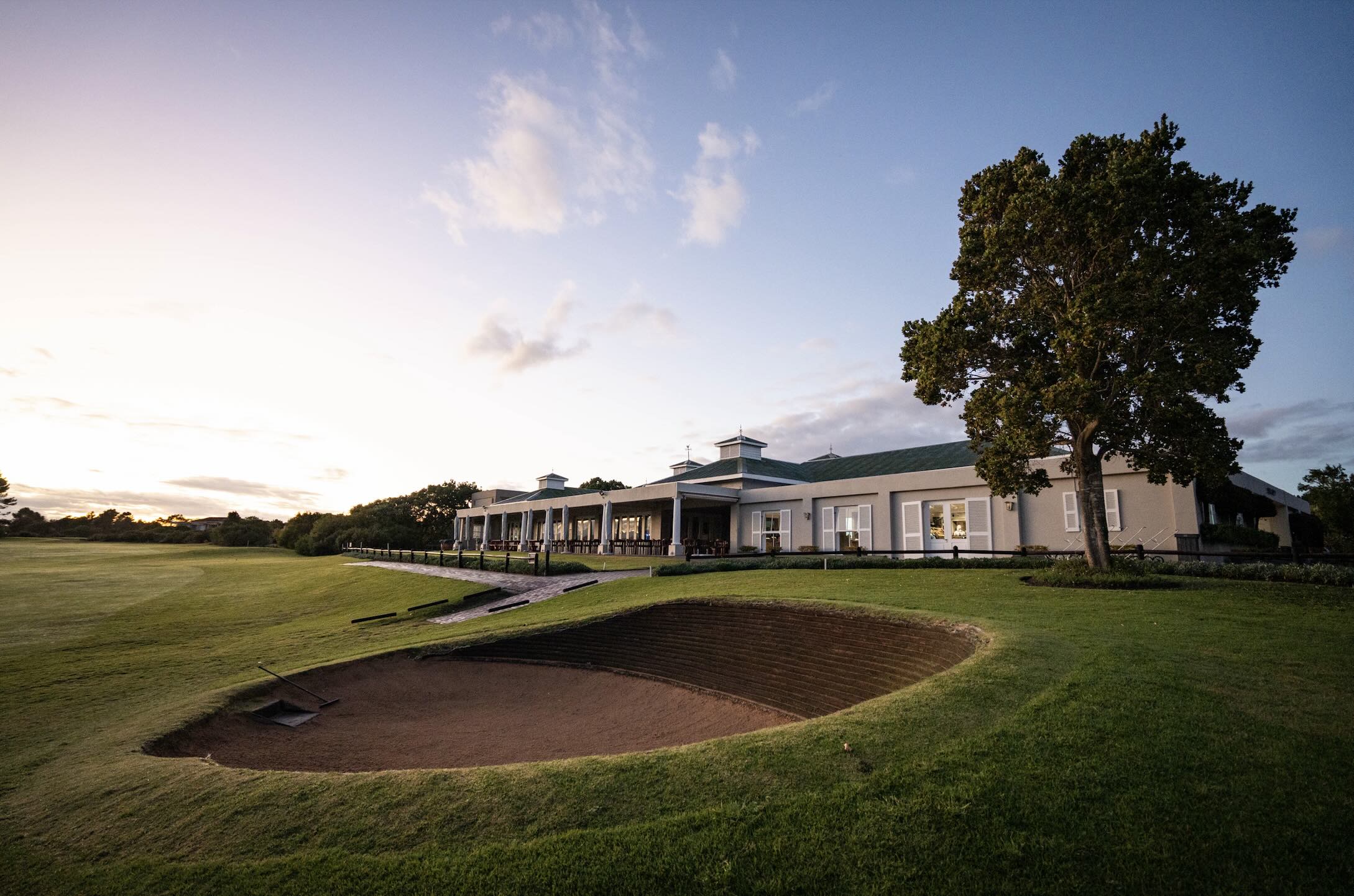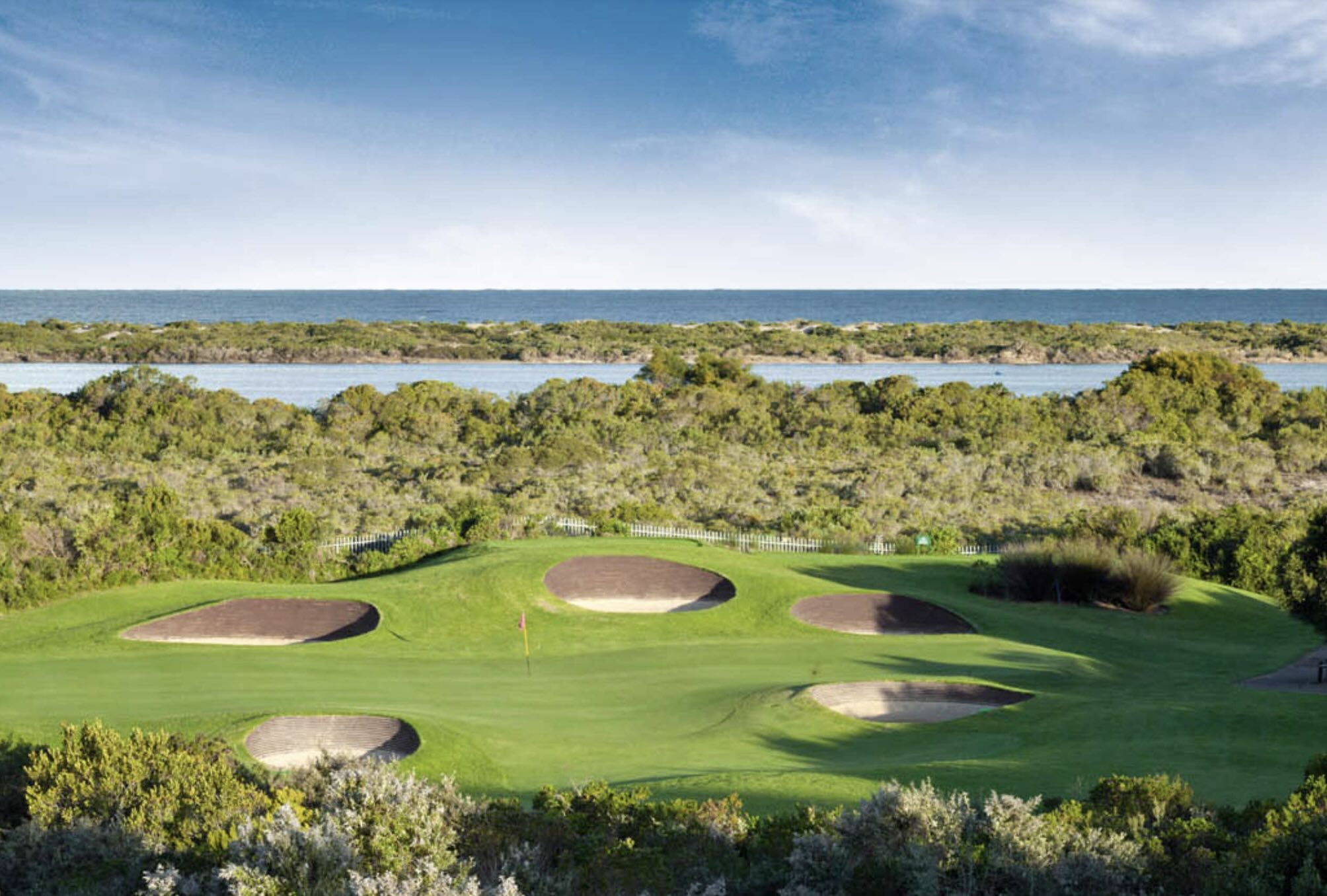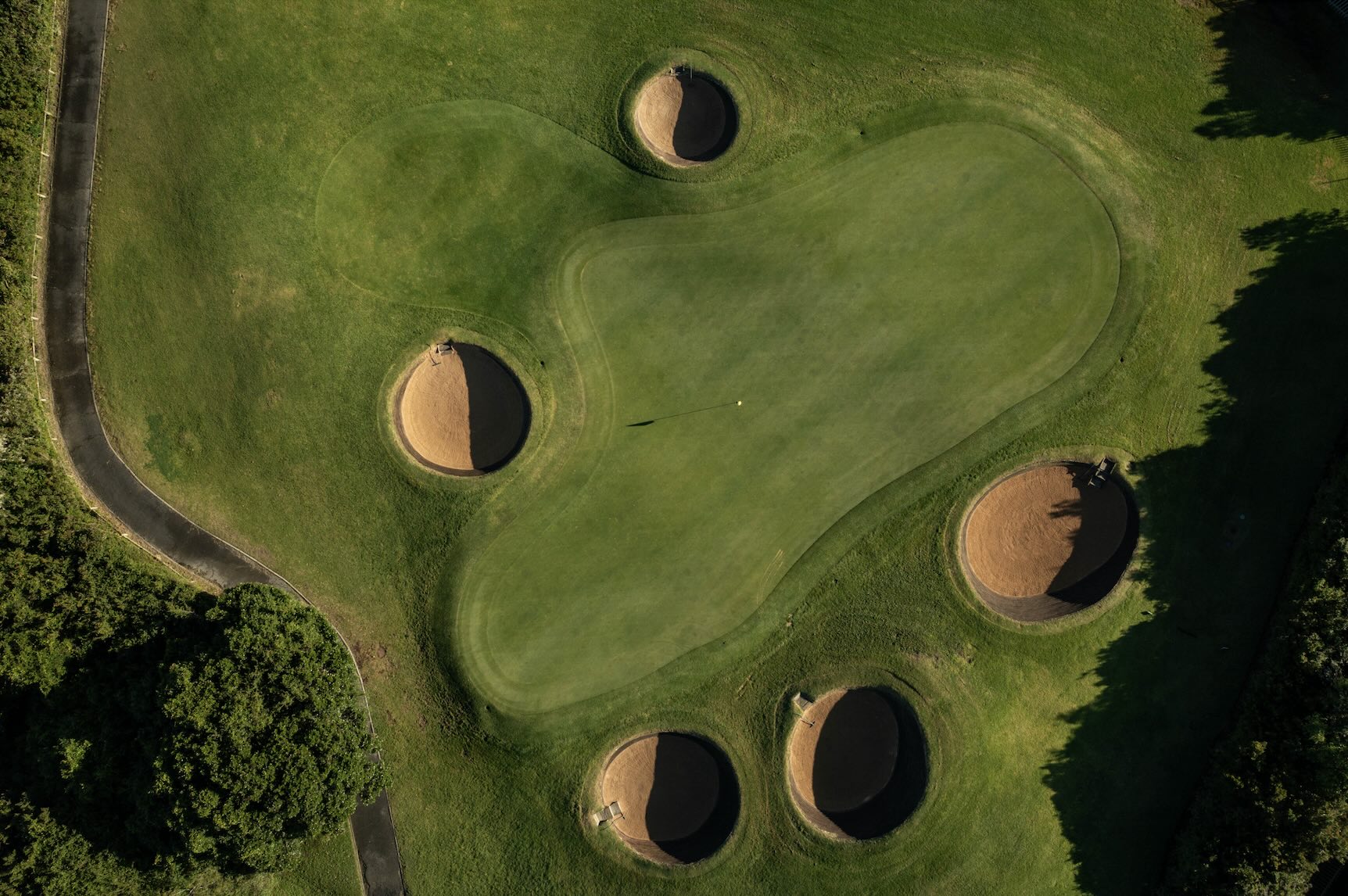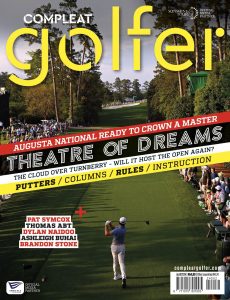This golf course in the heart of the Garden Route has an intoxicating blend of natural beauty, flora and fauna, while also being a world-class facility, writes CHRIS VAN GASS.
If there’s one truism at Goose Valley Estate golf course in Plettenberg Bay, it’s ‘keep straight on every hole’. But maybe that’s a golfing mantra.
This Gary Player-designed course is known for its bunkers – styled on the Fancourt Links course in nearby George – that act like magnets.
Built inside four housing developments, as a golfer you’re not overwhelmed by houses. They don’t intrude on the course that has retained as much of the fynbos and natural vegetation as possible in its design, at times making you feel like you’re in the middle of a natural paradise.
The area known as Ganse Vallei was originally agricultural. Over time, the farms were sub-divided into smallholdings, one of which was bought by Player, who still lives in his personal retreat that has become his family home.
Development of the Goose Valley Golf Estate started in early 1996 and by February 1997 both the nine-hole Player-designed course and 272 holiday condominiums were complete.
Local businessmen Tim Hutchinson, Billy Gibson and Joep van Almenkerk, keen golfers themselves, picked up the baton and completed the second nine holes.
Additional land was bought and Turtle Creek Golf Estate was born, and the construction of the second nine, again designed by Player, began.
The 18-hole Goose Valley course was officially opened on December 2002 with a shotgun start. Since then it has attracted local golfers, visitors from elsewhere in South Africa – and a large contingent of overseas golfers, known as swallows, who enjoy the best of the summer months. It is ranked among the top 18 courses in South Africa for condition.
The 1st at Goose Valley is a challenging start and deserves its stroke-three rating.
Water on the right for mid to longer hitters, out-of-bounds left for a pulled shot, and two fairway bunkers left for a slightly longer pulled shot await you on this dogleg-right par four.
Once you’re on the green, there are a few undulations to keep you honest, and depending on the pin position, could leave you staring down the barrel of a 20m-plus putt.
‘It’s one of the toughest starting holes I’ve played on,’ says Ruben Coetzer (26), head professional at Goose Valley. Coetzer, who joined Royal Durban at age 10 – and got his first job at that course – has one year left to complete his three-year PGA qualification.
The 2nd is a slightly easier hole, with water to carry at about 120m, but for the mid-handicapper, unless the westerly is blowing, an iron should suffice to the green, where everything slopes away like a tortoise shell.
The 3rd offers a nice little break after two tough holes. Again, if the wind is blowing it becomes a mammoth hole (for us 18-plus handicappers) off the tees with one of the biggest greens on the course.
Moving on to the par-four 4th tee you get your first glimpse of The Tides estate which adjoins Goose Valley and the Keurbooms Lagoon and Indian Ocean beyond. For the average golfer it can be a heartbreak hole: seeing your drive not making the top of the ridge, trickling back many metres down the slope, brings a tear to the eye.

4th hole at Goose Valley Estate
‘It is the toughest green to hit on Goose Valley – it’s extremely narrow, well bunkered and more punishment in store for the errant shot,’ says Coetzer.
Club captain Simon Mottershead agrees, adding that most days, as you walk up the fairway to the 4th green, you get lost in thoughts of beach days and fishing on the lagoon as the white sand glistens in the sun to your left.
Standing on the par-three 5th tee, your attention is once again focused on the short, straight stroke 17, which many may think is easy, given its rating.
But don’t be fooled. This short 116m hole is one of the most difficult stroke 17s on the Garden Route (say experienced golfers) if the prevailing easterly or westerly winds are blowing.
‘Once you get to the green, anything to the left sees you enter your own valley of sin,’ says Coetzer.
The green is fairly flat, although it does run towards the sea, so be mindful of a putt in that direction.
The 6th, where you get impressive views of the Tsitsikamma Mountains in the distance, is a fairly straightforward par four and short enough to hit a long-iron off the tee and leave an iron into the green.
The 7th, Goose’s stroke one, is a long, 490m par five off the club tee, and if the westerly is blowing, this dogleg-left, uphill hole is a beast. Water all the way down the left side can hurt a decent scorecard.
‘It is uncommon to have a par five as a stroke one,’ says Coetzer.
When you stand on the tee it gives you that lovely feeling of being on a links course.
A driving iron is the safest way to start this hole, leaving a well-hit 4- or 5-iron over the corner, with around 120-150m into the green. The uphill approach can add another 10-20m (if not more) on the shot, depending on the wind direction, so take that into account before hitting your second.
The green is generous, much wider than it is deep, with a greenside bunker on the right for any wayward shots.
Distance control is the key. You can’t see the hole until you’re up close.
The 8th is the easiest par five on the course and if you hit the ball straight, even the shorter hitters will reach this green in three good shots. It’s a scoring hole.
The 9th, which runs parallel to the N2 (but you don’t even realise it) is a great golf hole from the back tees, with a large dam on the right side for anything under 150m in the air. However, from the club tee a long-iron is the right club to this meandering uphill par four. A real Gary Player pot bunker awaits you close to the green.
The challenge is the pin position. Back pins are very difficult to get close to on the sloped back-to-front oval-shaped green. Long, and you’re out-of-bounds towards the guard hut where you entered the course. So get your numbers right or leave it short for upwards of a 30m uphill putt.
The halfway stop is spent at The Verandah, a privately leased restaurant and bar, serving not only halfway sustenance, but sit-down meals throughout the day (and night as well).
Don’t let yourself drift too far away at the halfway stop as the stroke-four, par- four, 386m 10th is another tough opening hole on the back nine.
‘It is the toughest hole at the worst part of the round. Your belly’s full. You have to have the best swing of your day off the tee. No matter the wind. This hole always plays to its stroke four,’ says Coetzer.
After a good tee shot you are still looking at around 170m to the slightly elevated green with greenside bunkers, right and left. The green slopes from back to front, creating some interesting putts, depending on the pin position.
And along the way to the green, birds galore – guinea fowl, hadedas, you name it.
Walking off the back of the 10th and across the estate’s ring road towards the 11th tee, you will, most days, be greeted with the sound of breaking waves in the distance.
The 11th hole is the signature hole (see below).
The 12th is a fair par four, reachable in two, but demands a straight tee shot, as out-of-bounds awaits on the left and fynbos on the right. Both will nearly always require another shot from the tee box.
If the flag is in front it is very gettable on this sloping green. If it’s at the back, it becomes extremely difficult,
The par-three 13th is the ‘lucky’ hole, with a prize of R100,000 on offer for a hole-in-one if an entry is taken – either on the tee box (scan the Zapper code), or at the pro shop before tee-off.
Lined by fynbos, it is an average par three, but uphill.
The 14th is another scoring par five – dogleg right, with out-of-bounds left and right, so another straight tee shot is required.
Once round the corner, it slopes gently downhill to a large sloped back-to-front, two-tier green. When the flag is at the front it’s quite easy. When it’s at the back, be wary.
It’s along this fairway that you get the first real feel of the housing on the complex – there are four different estates surrounding Goose Valley.
The stroke-two 15th is the toughest par four on the course, at 398m off the club tee.
With pine trees lining the fairway, the rule is, once again: keep straight.
It is a nightmare hole for the drawer of the ball. Branches of trees overhang 70% of the fairway.
Out-of-bounds right sees the driving range come into play, and out-of-bounds left is the N2 highway.
The 16th is a long, gentle dogleg-right par five with plenty of slope up to the pin, but beware of the fynbos lurking, right and left again, on this 449m hole.
The par-four 17th is the easiest hole on the course, but just make sure to hit your tee shot straight as out-of-bounds is on the right into the Fairways Close housing estate.
The 18th hole at Goose is a fairly flat 321m par four, and nothing more than a long-iron should be hit off the tee here – unless the westerly is blowing.
Out-of-bounds left and right requires yet another straight tee shot, but after that is out of the way, your second is fairly straightforward, to another back-to-front sloping green, protected by bunkers all around.

18th hole at Goose Valley Estate
To add to the pressure of hitting this green is the clubhouse verandah. Many eyes, sipping their post-round libation, will scrutinise your every shot.
If you hit it close enough, or sink a lengthy putt, a generous round of applause awaits you …
What better way to spend a summer’s evening than a few drinks on the verandah, overlooking the 18th fairway and watching the sun setting over the green.
SIGNATURE HOLE
11th hole, par three, 143m

11th hole at Goose Valley Estate
The 143m, downhill par-three 11th deservedly holds the honour of being the signature hole.
On the tee box you see the fynbos before you. As your eyes look upwards you are met by the bunker-protected green and then … the beauty of Plett, the Keurbooms Lagoon. The dunes and the ocean in the distance. To the right on the horizon is Robberg Nature Reserve.

If you stand quietly on this tee you are more than likely to hear the fish eagle’s cry from the lagoon to the left.
Club selection is the key here. Coming from an elevated tee to a very tricky green you can sometimes land on the green where you can’t even see the hole. If your ball enters the thick fynbos en route to the green, don’t even bother to look for it – you might say hello to a puff adder, especially in summer.
– This article first appeared in the April 2024 issue of Compleat Golfer magazine.

Photos: Mark Sampson
The post Course of the Month: Goose Valley Estate appeared first on Compleat Golfer.
Article Link: Course of the Month: Goose Valley Estate
